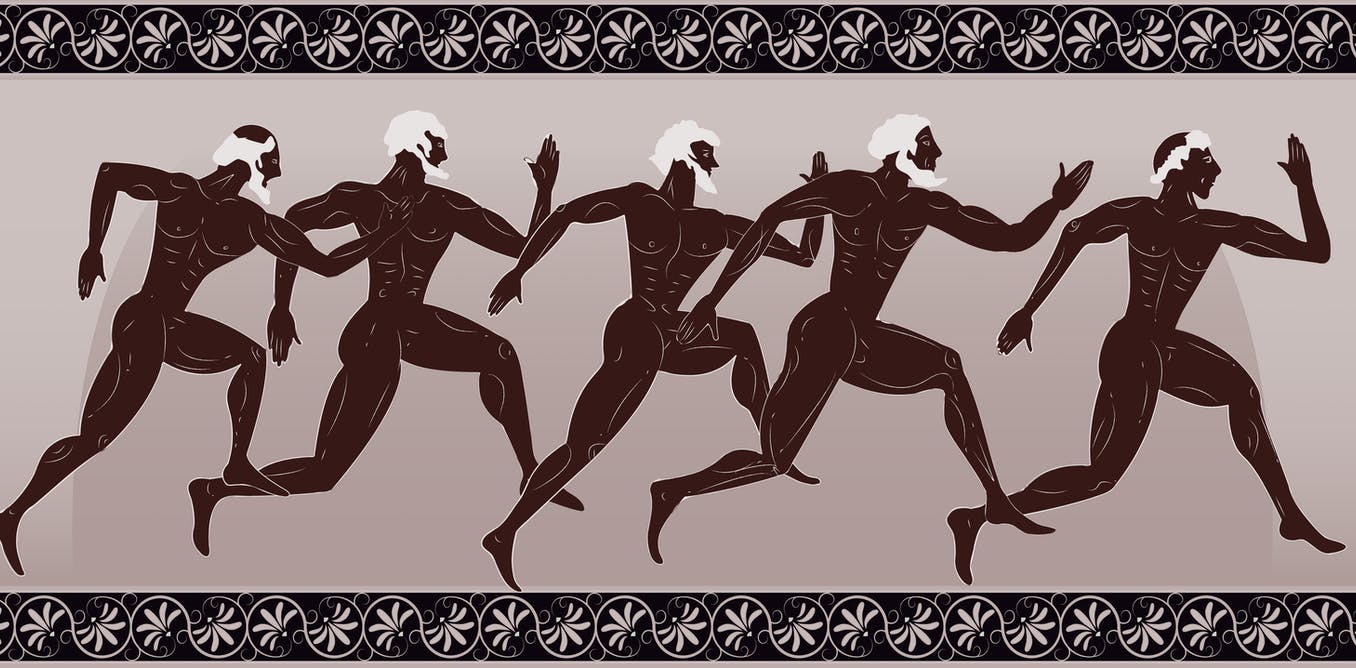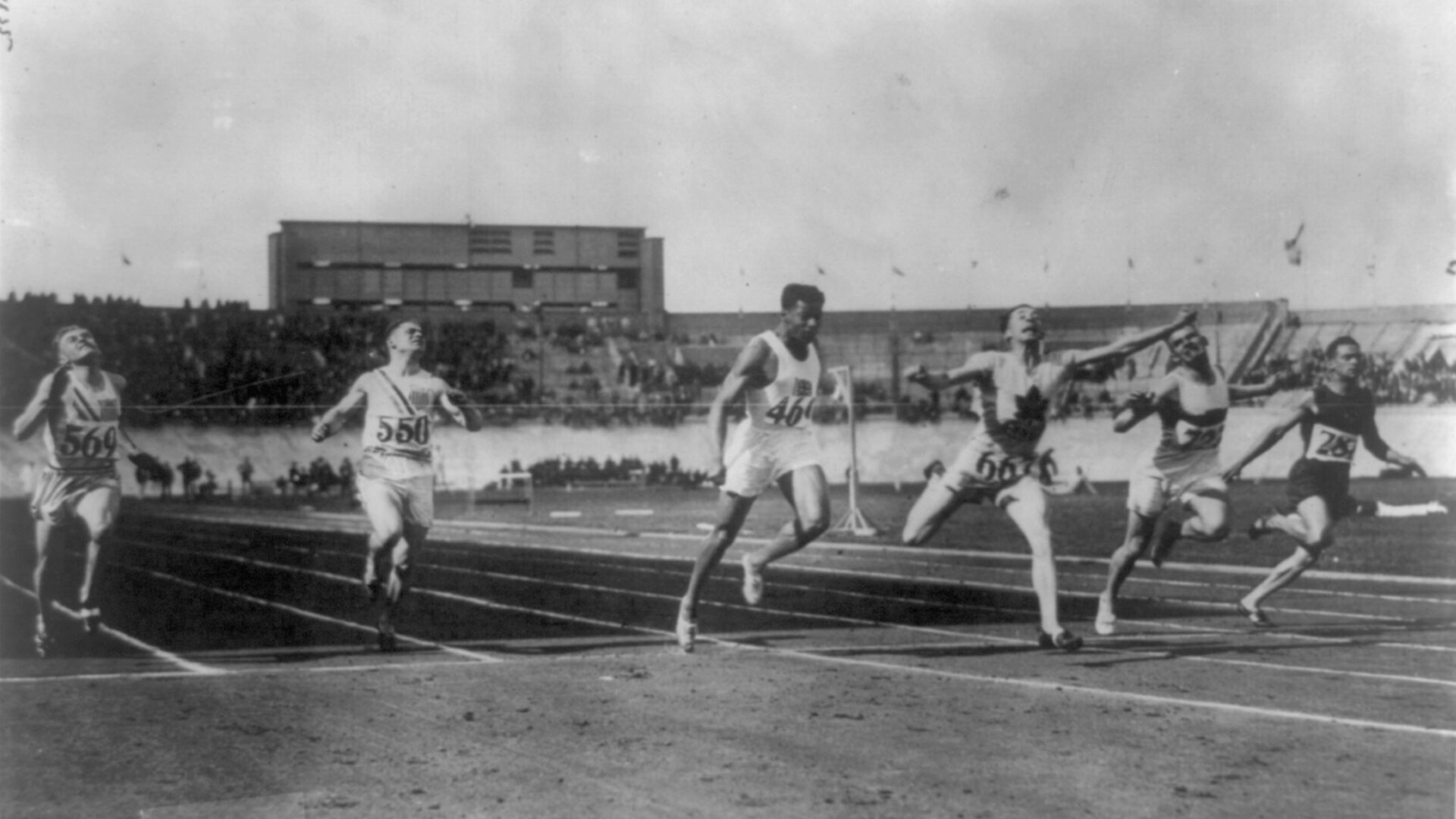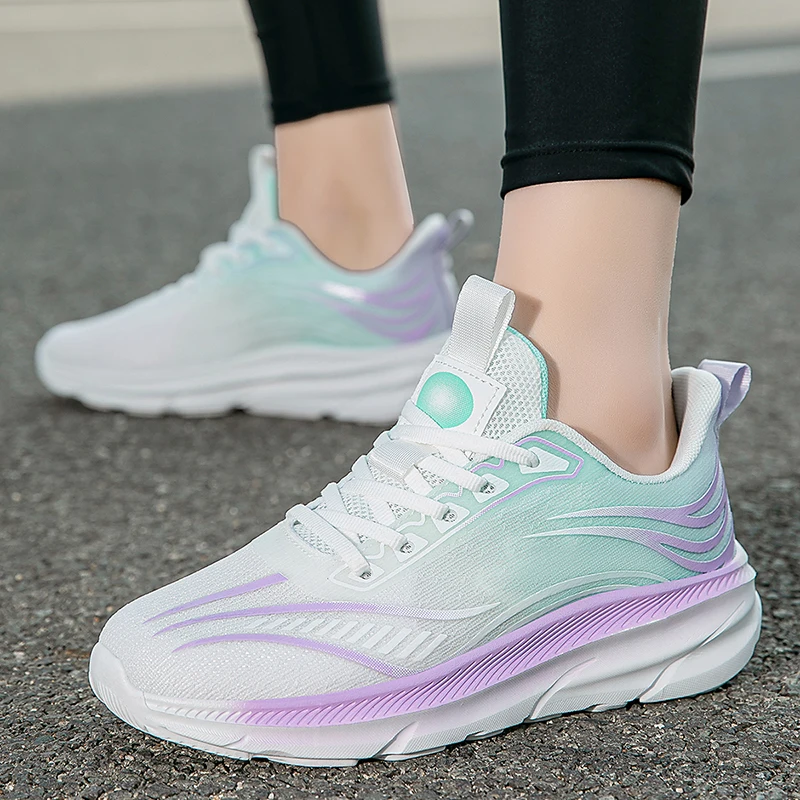Origins Of Running In Human Evolution
Long before finish lines and foam-topped water stations, running was literally in our genes. Imagine early hominids sweeping across the African savannah, their long strides powered by springy tendons and a revolutionary cooling system: sweat. Those ancestors didn’t have race bibs or cheering crowds; their survival depended on tracking prey until it slowed from heat exhaustion—what scientists now call “persistence hunting.” Fossils of Australopithecus walking upright date back around 4.4 million years, revealing our first tentative steps toward a two-legged world [2]. Fast-forward a million years, and Laetoli footprints show stride lengths akin to modern humans, proof that our bodies were already fine-tuned for endurance [4].
By roughly 2.5 million years ago, Homo erectus emerged with longer legs, a narrower pelvis, and an array of sweat glands designed to cool a moving body under a merciless sun [1] [5]. These adaptations weren’t an athletic fad; they were life or death. Hunting on foot meant you could outlast antelope or buffalo by sheer stamina, turning the act of running into humanity’s oldest endurance sport.
When I lace up my shoes today, I’m tapping into a legacy that stretches back millions of years. Each heartbeat, each inhalation, echoes a survival strategy honed under scorching skies. It’s incredible to think that strata of muscle memory—every muscle fiber, every gasping breath—descends from those prehistoric chases. Oddly enough, pounding pavement today can feel sacred, as if I’m briefly reconnecting with ancestral rhythms.

That ancient drive still echoes in our community gatherings. From city marathons to local fun runs, the urge to test our limits unites us with forebears who sprinted for their lives. In fact, events like the Covenant Health Marathon link modern celebration with primal instinct, reminding us that running is far more than exercise—it’s a shared human tale.
The story of running is literally etched in stone. Early hominids didn’t carry stopwatches, but their footprints and bones left clues we can still decipher. Around 4.4 million years ago, Australopithecus afarensis began walking upright, as confirmed by skeletal pelvis and femur shapes [2]. By 3.5 million years ago, the famous Laetoli tracks in Tanzania show stride patterns with arches and heel-to-toe impressions nearly identical to our own [5] [4].
Then came Homo erectus, roughly 2–2.6 million years ago, sporting anatomical tweaks tailor-made for distance. Longer legs, a narrow pelvis engineered for shock absorption, and an elevated nuchal ligament to stabilize the head during runs—all point to an endurance-running evolution [3] [1]. It’s one thing to walk upright; it’s another to sweat, breathe deeply, and find euphoria in motion, a runner’s high echoing the triumph of ancient hunts.
Seeing a modern marathon finish line, I can almost feel ancient footsteps carrying spears and hopes in tandem. Fossils don’t just tell us what our ancestors looked like—they offer a window into how every footfall became a brushstroke in our evolutionary portrait.
From couriers racing along the Nile’s dusty banks to temple runners in Mesoamerica, running shaped early societies. In ancient Egypt and Mesopotamia, swift-footed messengers carried pharaohs’ decrees across desert sands, their endurance a testament to human grit. Meanwhile, Mayan and Aztec temple runners delivered offerings at dawn, weaving breathless sprints into spiritual practice.
By 776 BCE, Greeks formalized the Stadion race at Olympia—a sprint of roughly 192 meters—ushering running from necessity to ritual [4]. These athletes became local legends, their victories immortalized in song, sculpture, and family lineage. Heroic feats on dusty tracks linked city-states in peaceful rivalry and collective pride.
I’ve often wondered: what must it have felt like to hear stadium cheers for the first time, ancient voices echoing against stone? Today’s local races still carry that communal heartbeat. Though our gear and metrics have evolved, the core impulse—honoring human potential through motion—remains unchanged.

The Greeks transformed running into a sacred art, with the Stadion serving as both competition and worship. In 776 BC, competitors sprinted barefoot across the sand, honoring Zeus and uniting city-states under a banner of athletic excellence. Victors were more than fast; they were conduits of divine favor, their names enshrined in temples and tales.
Physiologically, the Greeks inadvertently celebrated endurance-running adaptations—arched feet, efficient cooling through sweat, elastic tendons—traits honed over millennia for persistence hunting [1] [3]. Poets and sculptors echoed these feats, weaving anatomy and mythology into a single festival that honored both body and spirit.
It’s remarkable that the Stadion’s sacred dirt track still resonates in events like the modern Covenant Health Marathon. The flame they lit hasn’t dimmed; it flickers in every runner who stands at the starting line, heart pounding, ready to chase a horizon as old as our species.
The marathon’s tale begins with Pheidippides, the legendary Athenian messenger who ran nearly 25 miles from Marathon to Athens in 490 BC to announce victory over Persians. Collapsing at his goal, he left us a story more myth than map, yet it sparked a race that bridges antiquity and modernity. Fast-forward to London 1908, when royal protocol stretched the distance to 26.2 miles so the finish line would sit before the monarch’s box [4].
Our bodies, shaped for survival under African suns, still carry that endurance DNA—tendons that snap, arches that spring, sweat glands that cool [3] [1]. Each modern marathoner channels a lineage of hunters and messengers, pushing through lactic thresholds as ancient as our genomes.

Today’s marathon circuits, from city streets to mountain trails, are more than races—they’re festivals of human spirit. The annual Covenant Health Marathon keeps that myth alive, celebrating triumphs both personal and collective.
In the Middle Ages, running found its place in fairs, pilgrimages, and even warfare. St. Giles’ Fair in 12th-century England saw youths sprinting for ribbons tossed by amused merchants [4]. Messengers—“foot post boys”—braved muddy lanes to deliver urgent news, embodying ancestral adaptations for distance travel [3]. Tales of heroes outrunning wolves or rival knights found their way into folk songs, blurring history and legend.
These communal sprints fostered social bonds. Pilgrims hurrying toward holy sites, villagers racing in harvest festivals—running was woven into seasonal rhythms. There was no stopwatch, and victory meant honor rather than prize money, yet the essence of competition and camaraderie was deeply human.
Thinking of those barefoot runners, I feel a kinship that spans centuries. Their simple joy, exhaustion, and triumph echo today when I push past the final mile marker, reminding me that running has always been a shared human heartbeat.
The mid-1960s birthed a revolution: jogging went from niche to nationwide craze. In Oregon, coaches Bill Bowerman and Arthur Lydiard organized community jogs, inviting everyone from retirees to college students to “find your own pace, your own joy.” Bowerman’s 1966 guide, Jogging, sold millions, and by 1969 some two million Americans were clocking sidewalk laps in the early dawn light [4].
Running clubs blossomed. A friend of mine recounted her college days: she traded dorm gossip for pre-dawn 5Ks, forging friendships that outlasted final exams. Reports from that era note local jogging groups swelling from a handful to over 1,200 in just a few years—proof that running tapped into a deep-seated need for movement and community.
That era reframed running as self-care rather than competition. We rediscovered what our hominid ancestors knew all along: motion heals. Today’s parkruns and community 10Ks carry that spirit forward, reminding us how a simple jog around the block can spark lifelong transformation.
Once you accept that humans are born to run, it’s thrilling to see how technology is enhancing our natural gifts. In recent years, carbon-fiber plates embedded in midsoles and exaggerated rocker shapes have improved running economy by up to 4% in lab tests [6]. Elite athletes wearing the Nike Vaporfly shattered marathon records, while weekend warriors swear they feel “springy” with each stride.

Meanwhile, Adidas introduced 3D-printed midsoles tailored to individual gait patterns, blending cushion and stability in ways once thought impossible [7]. And Nike’s Adapt line uses self-lacing tech and smart insoles to adjust tension mid-run as feet swell [8]. These breakthroughs blur lines between athlete and algorithm, promising safer, smarter strides.
Across parks and pavement, running communities are thriving. Clubs report membership surges of nearly 50% over the last decade, drawing people seeking health, camaraderie, and purpose [4]. This resurgence isn’t random—it taps into a biological blueprint laid down millions of years ago, from upright walking to diligent persistence hunting [2] [3].
Take Jane, a parkrun regular who found friendship and focus each Saturday morning. She says, “I come for the run but stay for the people.” Studies show group runners experience lower stress and deeper connections, proving that collective motion fosters belonging as powerfully as it strengthens muscles [1].
For me, lacing up beside neighbors reminded me that running isn’t solitary—it’s a shared story. Our joints, veins, and synapses evolved for endurance; running together is our default community setting, rewiring modern loneliness into ancient solidarity.
Across millions of years, from dusty plains to asphalt avenues, running has remained our constant companion. Fossil evidence shows the first bipedal strides 4.4 million years ago, and anatomical shifts in Homo erectus turned mere walking into a powerful survival strategy [2] [5]. Those early runners shaped our physiology, community bonds, and even spiritual rituals.
Today, every mile we cover echoes those ancient footsteps. Whether you’re chasing a new personal best or cheering at the Covenant Health Marathon, the thrill of running connects us to generations past and to each other. I still feel a spark of pride with each step, knowing that I’m part of a legacy millions of years in the making.
- [1] UC Davis – Humans Are Born to Run
- [2] Smithsonian National Museum of Natural History – Walking Upright
- [3] Wikipedia – Endurance Running Hypothesis
- [4] Runners Blueprint – When Was Running Invented?
- [5] UVM – Persistence Hunting Paper
- [6] Taylor & Francis – Running Economy and Carbon Fiber Plate Study
- [7] Adidas Group – Innovative Midsole Technology
- [8] Nike News – Adapt Auto-lacing Technology
“`html
Complete Top Picks Comparison – 23 Products
| Product | Source | Price | Rating | Image | Buy |
|---|---|---|---|---|---|
| Under Armour Men’s Charged Surge 4 Sneaker | $43.95 | ★★★★☆ |  | Buy on Amazon | |
| adidas Men’s Run Falcon 5 Sneaker | $0.00 | ★★★★☆ |  | Buy on Amazon | |
| Brooks Men’s Ghost 16 Neutral Running Shoe | $0.00 | ★★★★☆ |  | Buy on Amazon | |
| Brooks Women’s Anthem 7 Neutral Running Shoe | $85.00 | ★★★★☆ |  | Buy on Amazon | |
| Under Armour Men’s Charged Assert 10 Running Shoe | $0.00 | ★★★★☆ |  | Buy on Amazon | |
| Men’s Running Shoes, Non Slip, Breathable, Lightweight Fashion Sneakers, Slip Resistant Athletic Sports Walking Gym Work Shoes | $0.00 | ★★★★☆ |  | Buy on Amazon | |
| Under Armour Women’s Charged Assert 9 Running Shoe | $0.00 | ★★★★☆ |  | Buy on Amazon | |
| Skechers Men’s Go Run Consistent 2.0 Sneaker | $0.00 | ★★★★☆ |  | Buy on Amazon | |
| ASICS Men’s Gel-Contend 9 Running Shoes | $0.00 | ★★★★☆ |  | Buy on Amazon | |
| adidas Men’s Run Falcon 3.0 Shoe | $0.00 | ★★★★☆ |  | Buy on Amazon | |
| Hot Sale Sneakers Male Peru Flag Print Men’s Blade Running Sneakers Casual Trainer Shoes Man Fashion White And Red Blade Shoes | $22.74 | N/A |  | Buy on AliExpress | |
| Brooks Ghost 15 Men’s Running Shoes – Breathable Casual Sports Footwear for Autumn Genuine Comfortable Official Website | $55.45 | ★★★★★ |  | Buy on AliExpress | |
| Polynesian Hibiscus Flower Design Basketball Shoes New Street Trend Durable Outdoor Running Shoes Comfortable Lace-up Sneakers | $22.74 | N/A |  | Buy on AliExpress | |
| Women’s Trendy Thick Sole Sneakers New Arrival Breathable Running Sports Shoes Lightweight Wear-Resistant Support Trainer | $39.20 | N/A |  | Buy on AliExpress | |
| Tonga Design Shock Absorbing Sneakers Couple Fall Lace Up Flats El Salvador Flag Print Running Lightweight Vulcanized Shoes | $22.74 | N/A |  | Buy on AliExpress | |
| Fashion Art Polynesian Hibiscus Flower Print Sneakers For Women Summer Autumn Comfortable Breathable Outdoor Sports Running Shoe | $22.74 | N/A |  | Buy on AliExpress | |
| Dopamine sneakers Women’s summer non-slip soft soled mesh breathable casual shoes Running light travel shoes dancing | $15.62 | ★★★☆☆ |  | Buy on AliExpress | |
| Demon Slayer Flats Sneakers Tanjiro Nezuko Mens Womens Sports Running Shoes Sneaker Lace Up Mesh Footwear Tailor-made Shoe Balck | $24.08 | N/A |  | Buy on AliExpress | |
| YRZL Women Sneakers Fashion 2025 Lightweight Breathable Mesh Anti Slip Running Tennis Comfortable Athletic Shoes Women | $7.00 | N/A |  | Buy on AliExpress | |
| 2025 New Women Casual Shoes Spring Summer Fashion Lightweight Soft Sole Running Sneakers for Ladies | $14.15 | ★★★★☆ |  | Buy on AliExpress | |
| adidas men Supernova Prima Running Shoes | $67.00 | N/A |  | Buy on eBay | |
| adidas women Adizero SL2 Running Shoes | $37.00 | N/A |  | Buy on eBay | |
| New Balance Unisex XC-72 Running Shoes | $39.99 | N/A |  | Buy on eBay |
“`
